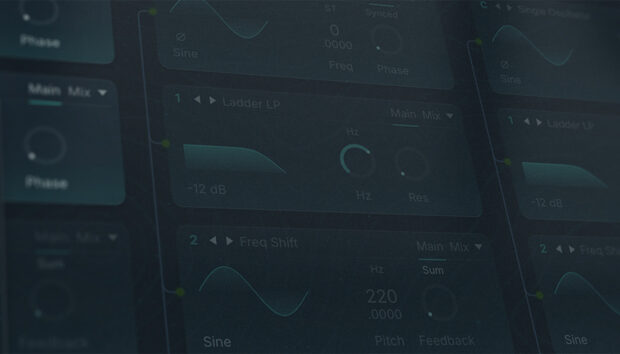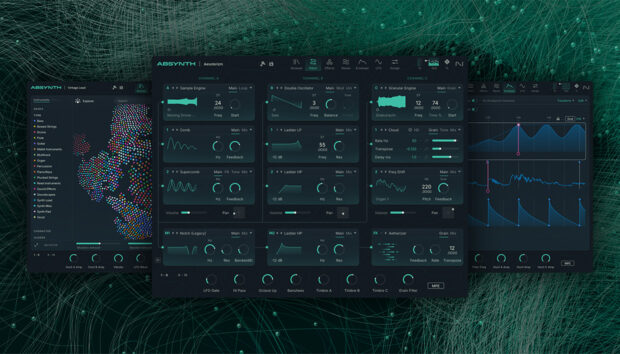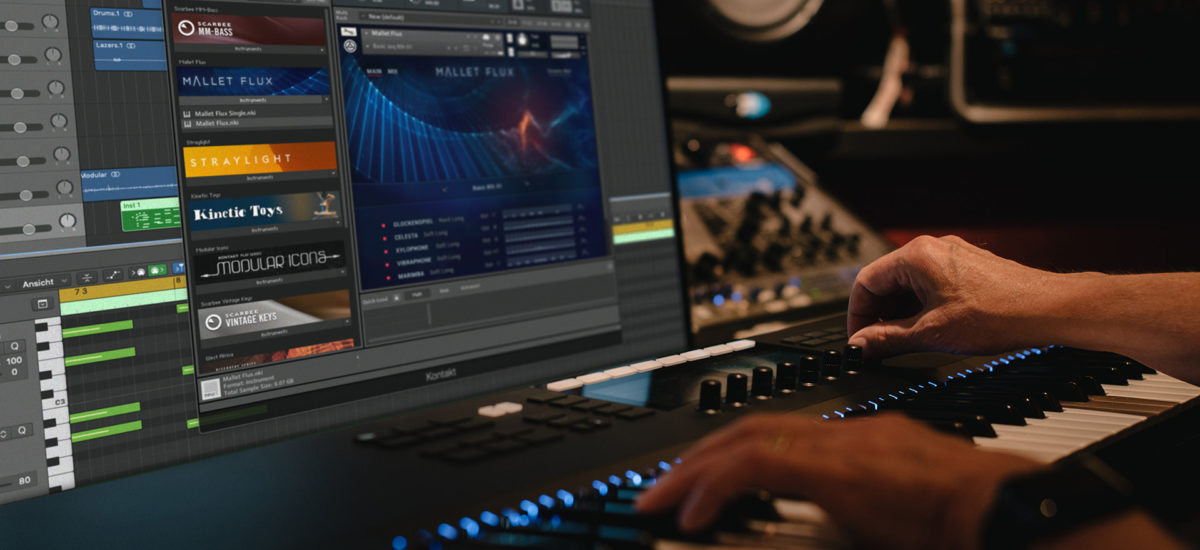
An easy way to spice up any melodic, harmonic or rhythmic part is by introducing some kind of polyrhythmic or polymetric variations. Let’s take a look at how to do this using the Piano Roll on a DAW just by using the KONTAKT instrument, MALLET FLUX.
Polymeter
Polymeters can be easier to understand and implement in a DAW than polyrhythms. As the name suggests, there will be multiple meters implied in the musical phrase. The most effective way to hear this is to have different instruments playing the different metric parts. To start this off simply, let’s try to create two meters in one phrase using two different instruments. In this instance let’s use the Marimba from MALLET FLUX and the NOIRE Felt Piano.
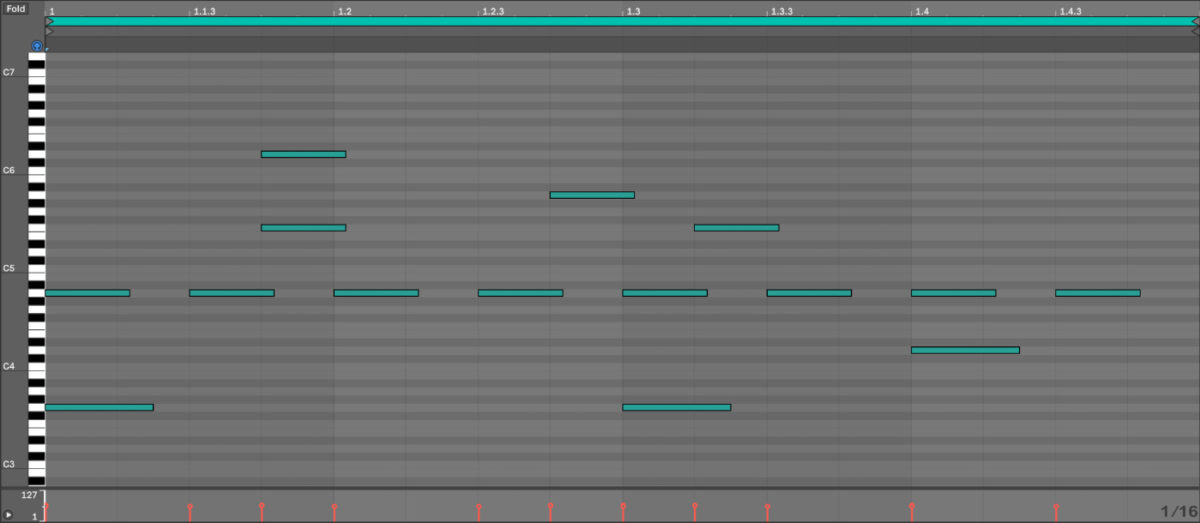
Here is the first part played on the marimba:
The phrase is in 4/4 time signature with the piano roll showing a 16th note division. Now we need to create a phrase for the piano that will be in a different time signature. To make this easy, we can re-use the marimba part and just shorten the length to make it a different time signature. To do this, reduce the part by an 8th note to create a 7/8 time signature.
Here’s the 7/8 piano part:
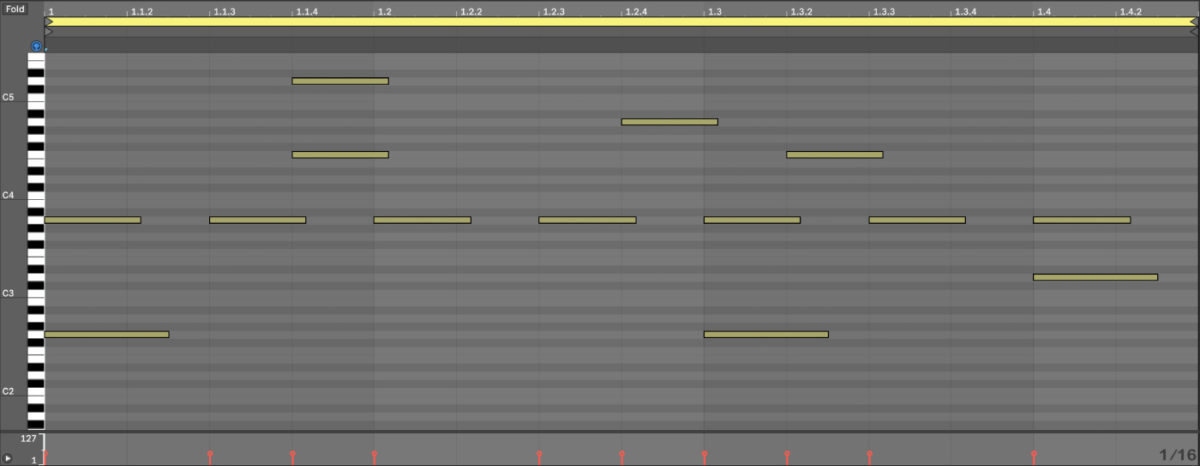
You can hear the new Felt Piano part here
Looking at the bar beat indicators in the piano roll might be a bit confusing as the time signature according to the DAW is still 4/4. It’s just that we have shortened the length of the 4/4 phrase to make it a 7/8 phrase. The piano roll is still showing a 16-note grid so if you count, you will notice a total of 14 16th notes, which add up to a time signature of 7/8. In Ableton Live, the time signature for each clip can be changed but this may not be the case in every DAW.
Now to create the polymeric phrase, and all we need to do is play the two parts simultaneously. Pan both the parts off center, so on one side of the stereo image you mostly hear the marimba and on the other, the piano. The real fun is in having the two parts share the same space to really emphasize the polymeric effect.
Looking at the clips in the DAW you will notice how the two parts interact with each other. After exactly seven repeats the phrases align back together.
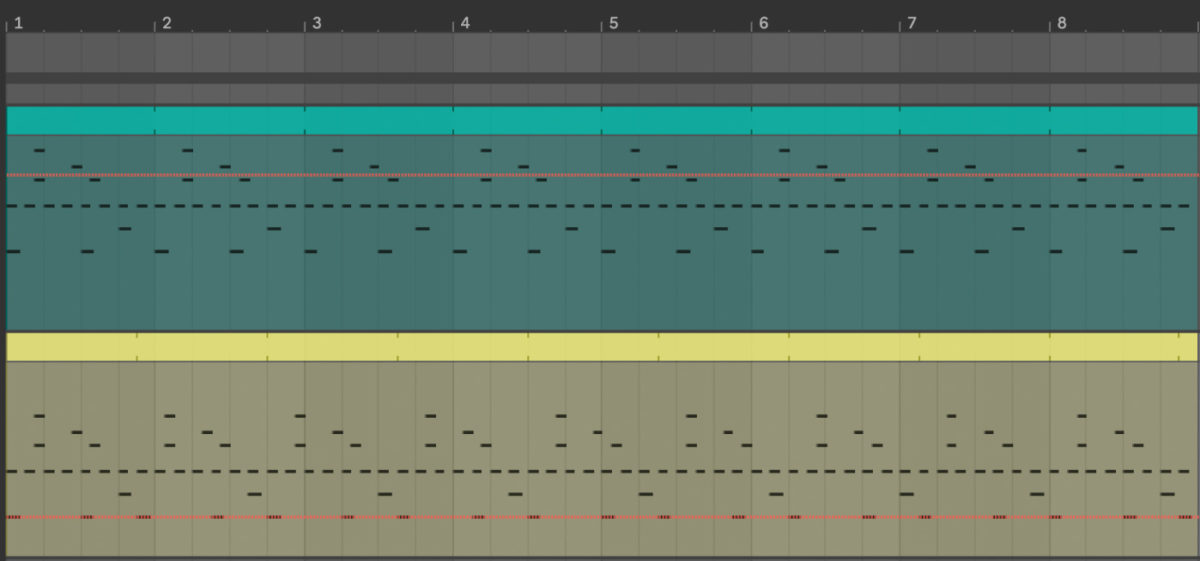
You can take this idea a step further by combining parts with different time signatures. As noted, the easiest way to do this is to duplicate the first part and then shorten or lengthen it. To add more variety, change up the notes on the duplicate part so it’s not the exact same phrase.
Now that we have a better understanding on how to create polymeter parts, let’s take a look at polyrhythms.
Polyrhythm
Polyrhythms are a combination of multiple independent rhythms played within the same meter, at the same time. It sounds complicated but using an example should simplify things. Imagine one part playing four beats in one bar (quarter notes), while a second part plays three beats in that same bar. This is probably the most common polyrhythm. What does this sound like? Have a listen below:

One important consideration is that the three beats need to be equal. This is essentially a triplet. You are not limited to just a three on four, you can have any permutation or combination of even, or odd tuplets. For example a five on four will essentially be a quintuplet over a common rhythm. It looks and sounds like this:

These polyrhythms work really well on drum patterns. Here’s an example of a septuplet rhythm on the hi-hat over a standard 4/4 kick and snare pattern.

Building on this pattern, we can make that hi-hat part sound even more interesting by muting or deleting some notes. The timing stays the same even though the notes are removed, so even though this is still that septuplet rhythm, the rests make the whole part sound a lot more interesting.

MALLET FLUX
MALLET FLUX has a built-in sequencer with some interesting options for creating polymeric as well as polyrhythmic patterns. Since all the rhythms will be created in MALLET FLUX, all you need to do is hold down a note or sequence in a long note in your DAW to hear the result.
Load up MALLET FLUX and click on the Sequencer Presets pop-up.
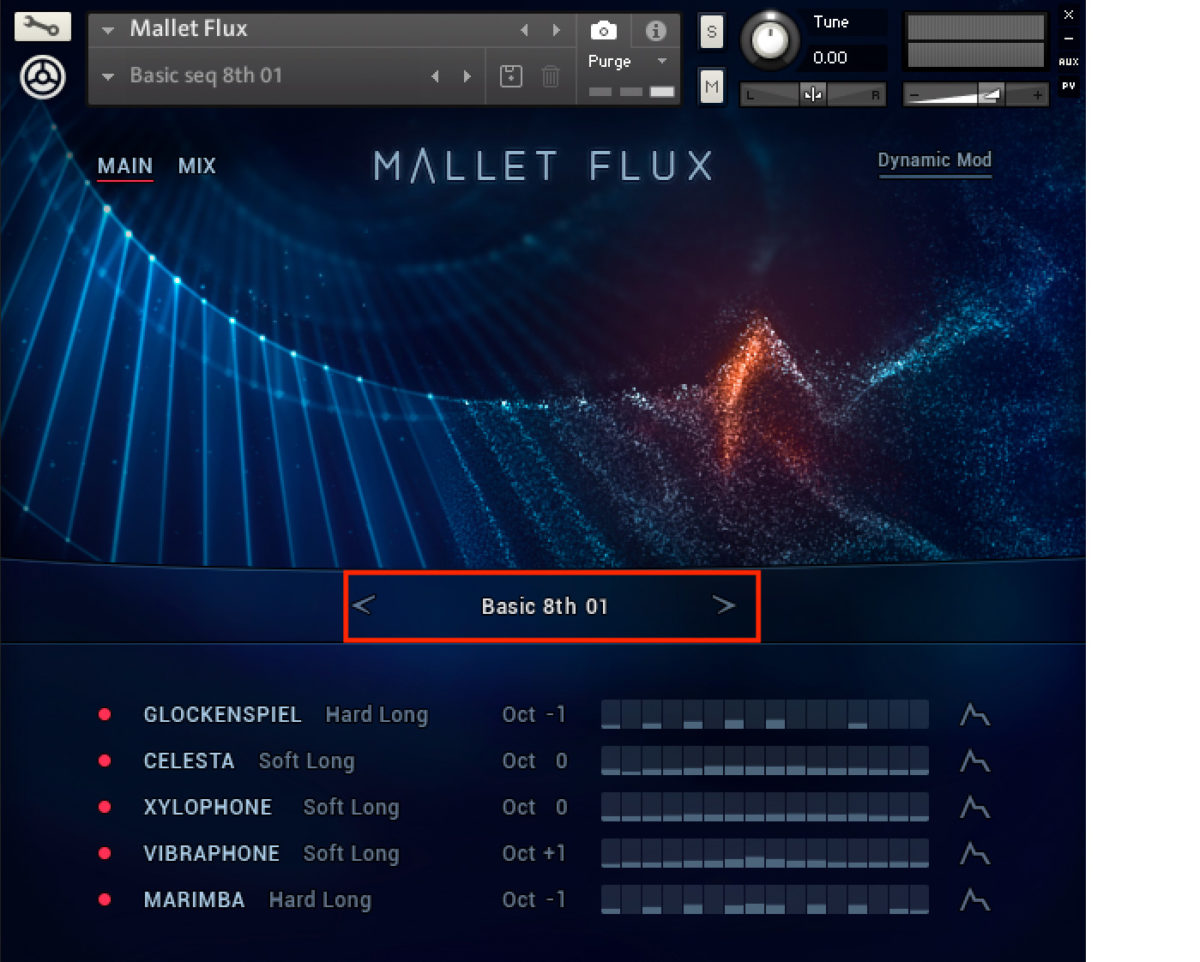
Select the Arp 16th 10 preset. This is going to be our starting point. Hold down a note to hear the preset pattern. It has five instruments playing individual rhythms. Get familiar with the rhythm as we are going to change it up by creating polymeters and polyrhythms. Click on the Step Sequencer area for the first part which is set to Glockenspiel.
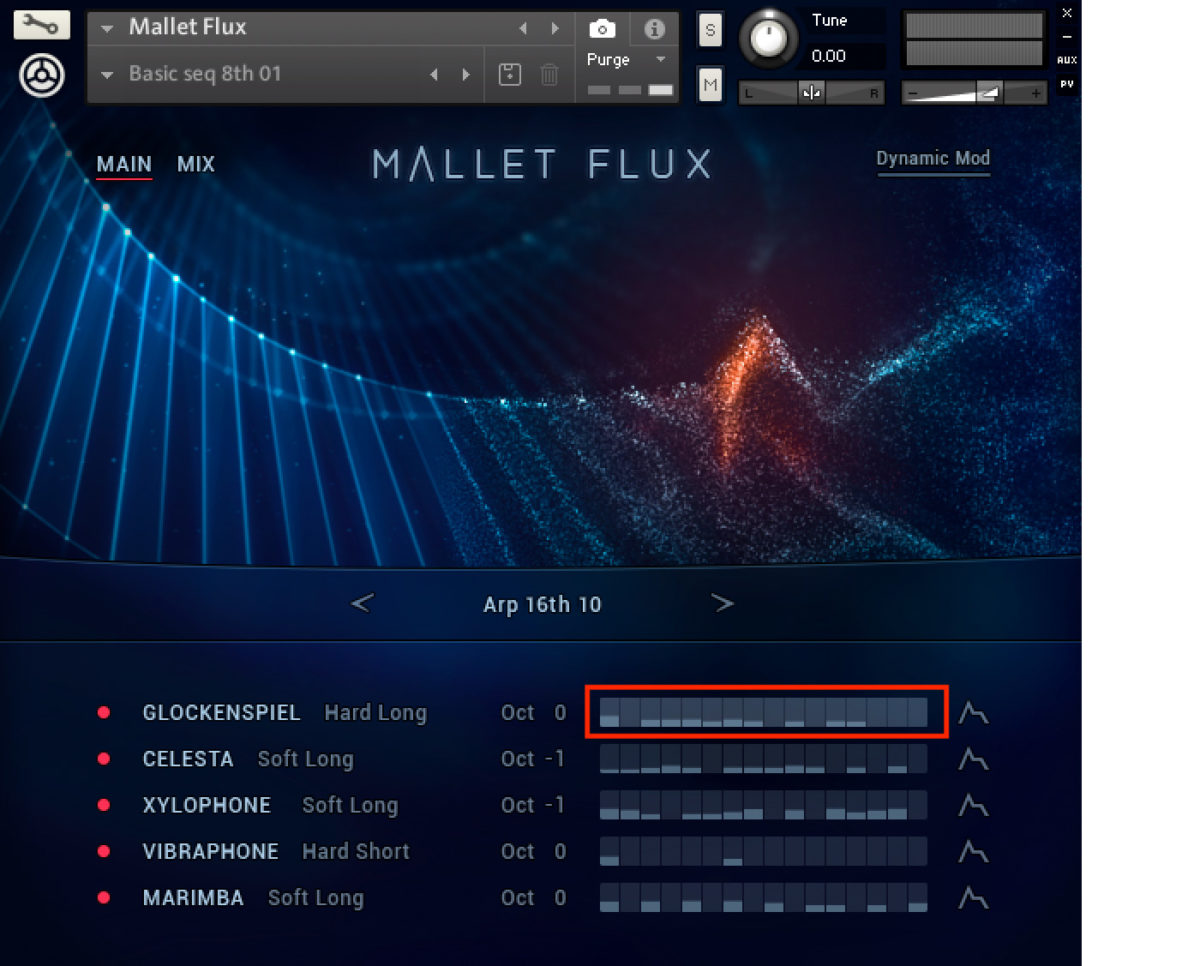
This will open up the larger step sequencer view. Here let’s change the Length parameter to 12. This will shorten the part to 12 steps, while all the other parts are still set at 16 steps, thus creating a polymetric effect.
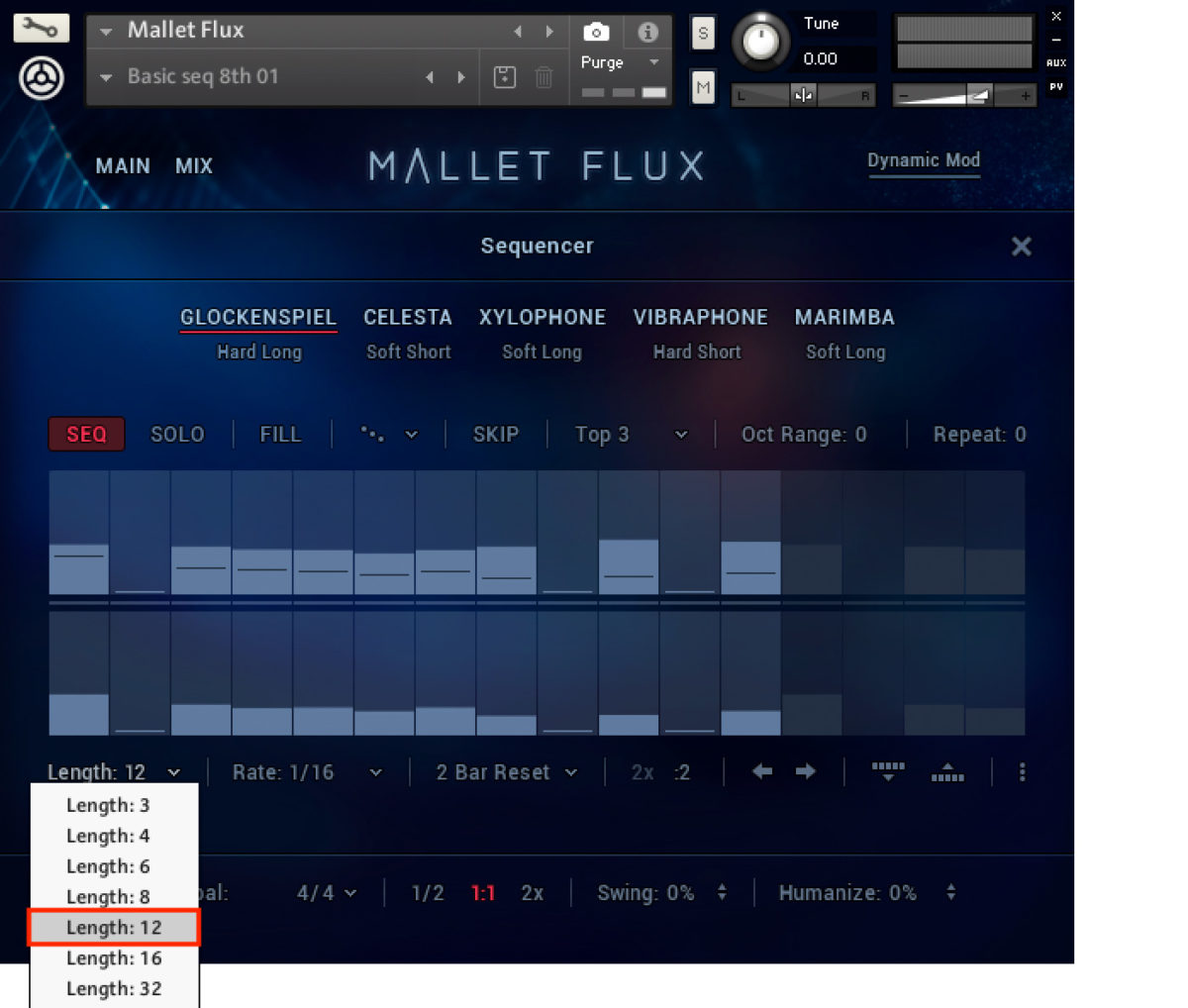
Next, click on the Xylophone part to open its step sequencer. Let’s set this part to six steps. This creates another polymeter on top of the previous one.
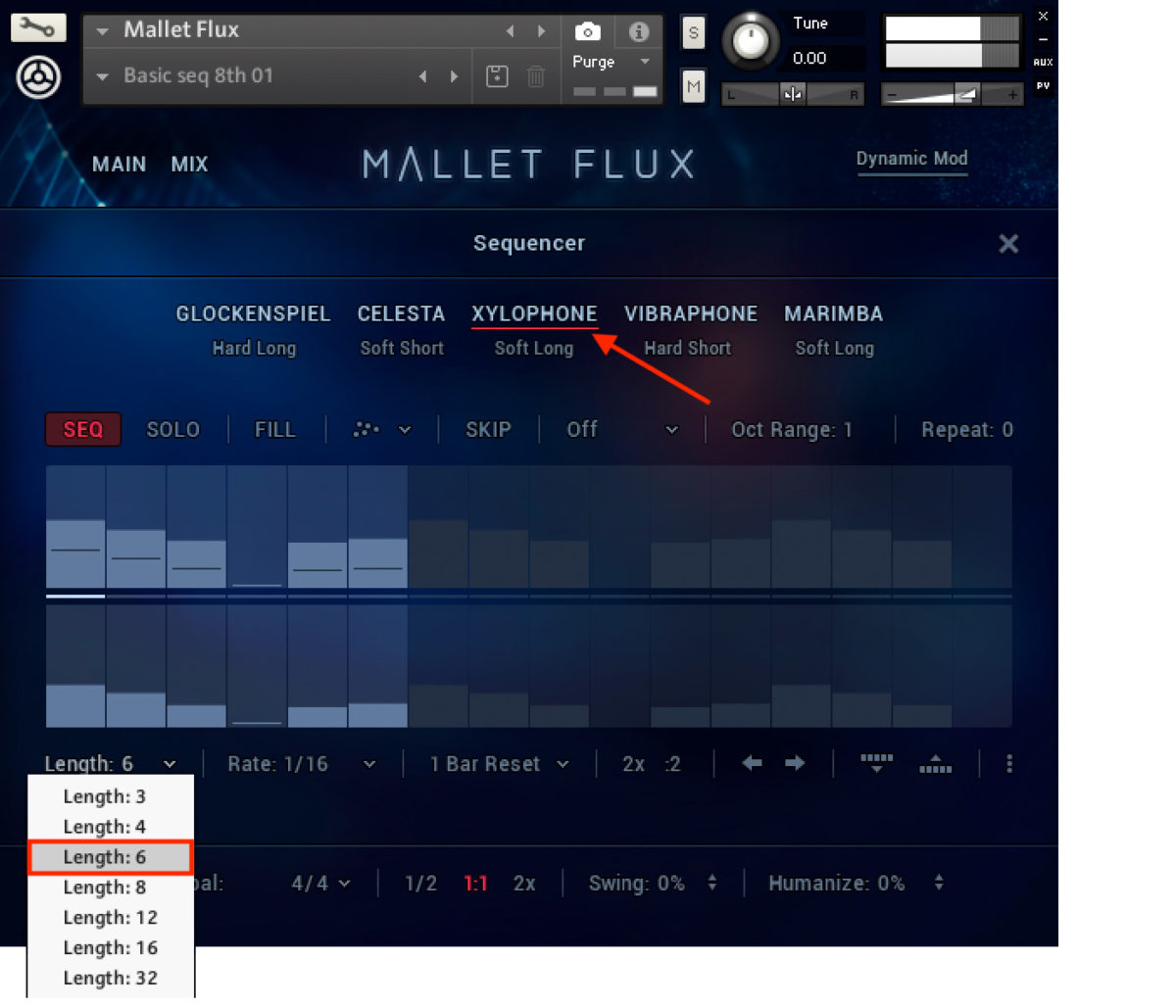
Now select the Marimba part to open its step sequencer. Set its rate to 1/8T which is an eighth triplet. This creates a polyrhythm over the other parts. Let’s also set its length to 12.
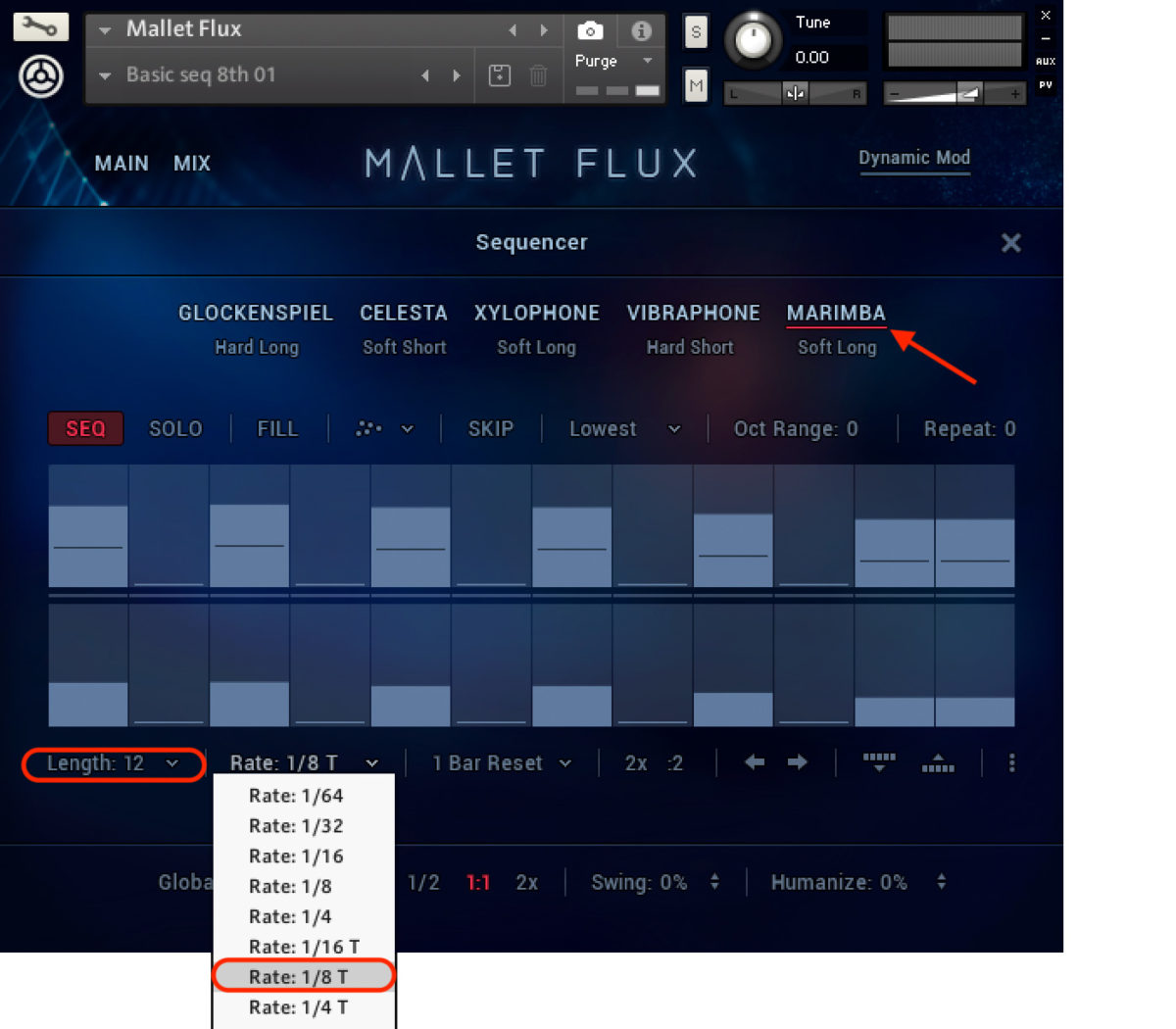
This is what it sounds like after all the changes.
There are a lot more options with MALLET FLUX’s sequencer like shifting the entire sequencer left or right, repeat number, octave range, swing and so on. All these are worth exploring to further add variety to your patterns. The great part about using MALLET FLUX is that the patterns are all created within the KONTAKT instrument itself. You don’t have to manually do it in the DAW. Of course you also have the ability to combine some DAW polyrhythms and polymeters with the ones from MALLET FLUX to create really complex and involved patterns.
Here’s an example of using all these ideas in a musical context.











